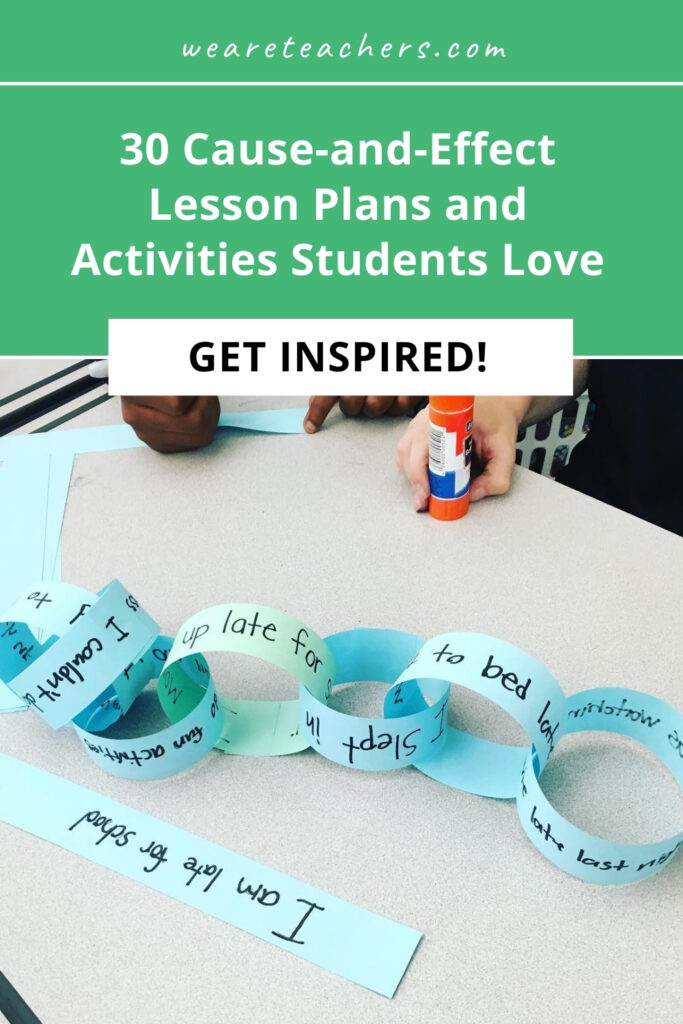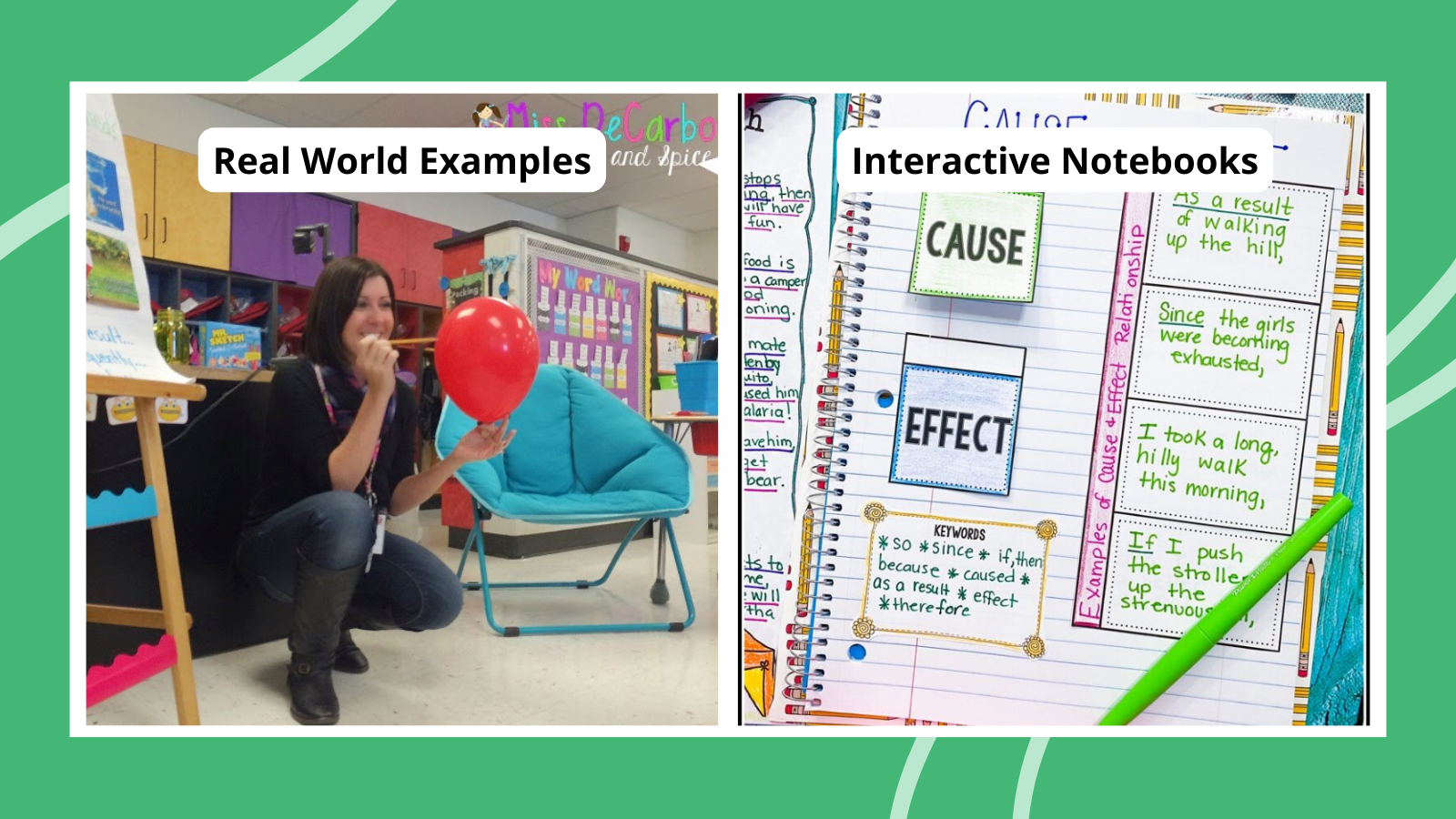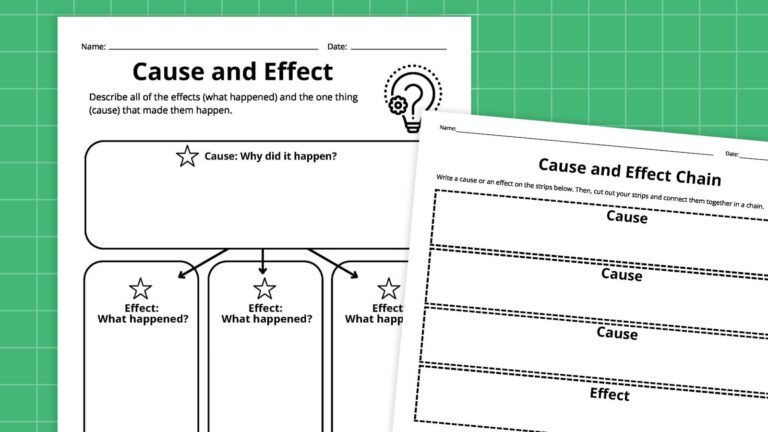Why did the dog run away? Because the owner left the gate open. Why did the boy cry? Because he fell off his bike. Cause and effect can be a challenging concept for kids especially when it requires them to use information from earlier in a novel or when it requires students to infer. But don’t worry, we’ve got you. Here are cause-and-effect lesson plans, starter ideas, and classroom activities that are simple but effective to help your students master this reading concept.
Scroll through these cause-and-effect lesson plans to get inspiration and grab some freebies too!
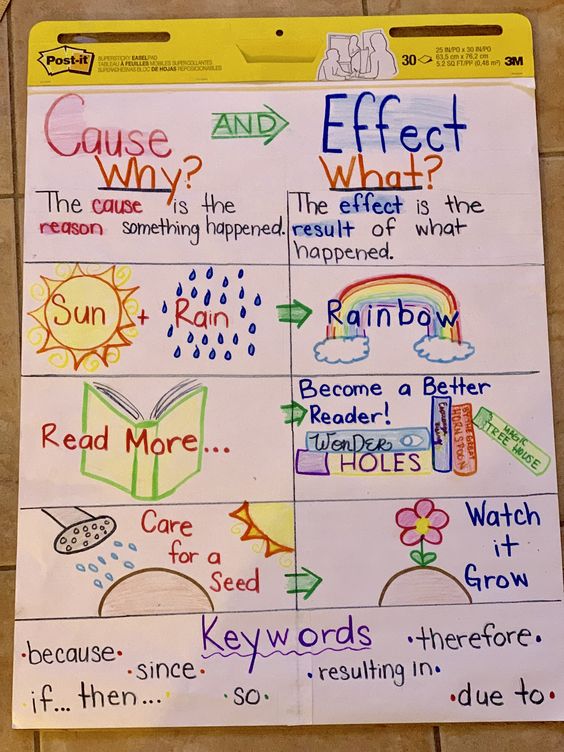
1. Use anchor charts
As you introduce cause-and-effect, an anchor chart can help reinforce the concept. They’re great to refer back to when reviewing and are helpful for kids to look at when working independently.
Use an anchor chart to emphasize is that the cause is why something happened. The cause always happens first, even if it isn’t mentioned first. The effect is what happened, and it occurs after the cause.
Check out 15 cause and effect anchor charts for inspiration.
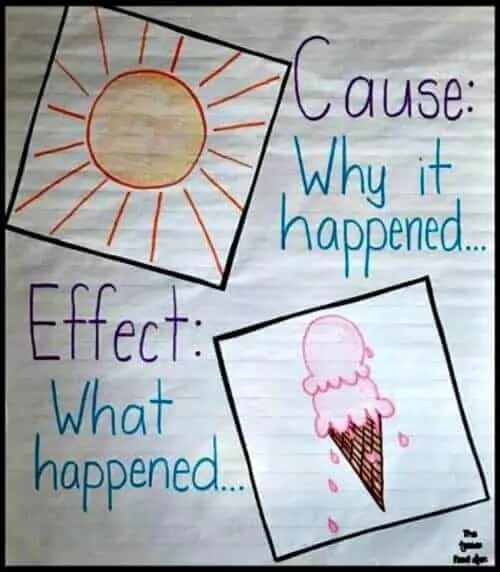
2. Give concrete examples
Students are causing effects all day long. Use real life examples, like dominos, light switches, toy cars on a ramp, and so on. As you (or, even better, a student) demonstrate these examples, ask your kids about the cause and the effect for each.
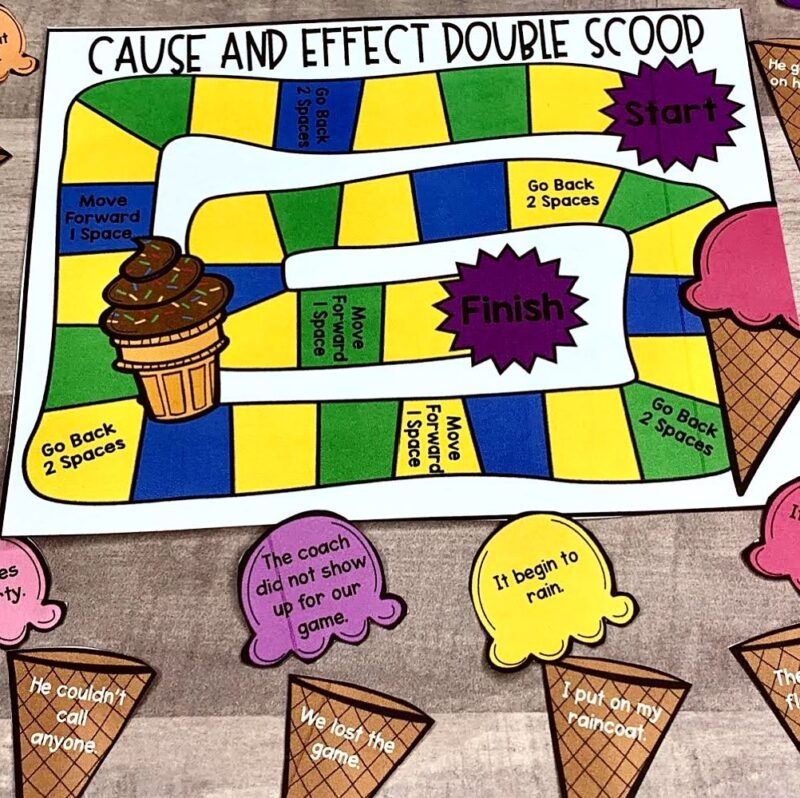
3. Play a board game
Create our own board game using our free templates. You can print the board and write on it to gamify your cause-and-effect lesson. Just grab some dice and you are ready to roll!
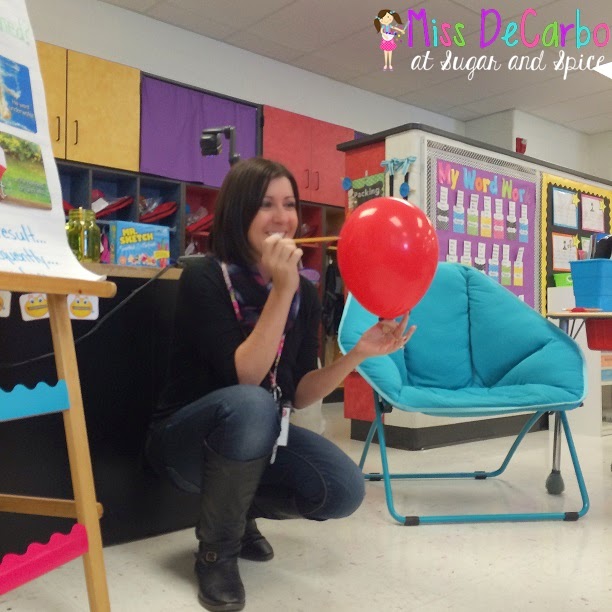
4. Discuss real life examples
Give your class real scenarios and ask what would happen. You might say, If I poke this balloon with a pencil, what would happen? Then have students determine the cause and effect.
Continue asking similar questions, using the same frame of if (the cause) and what (the effect). For example, if you ate too much candy at one time, what would happen? If you practiced playing the piano every day, what would happen? If you never brushed your teeth, what would happen? To add some fun, you might even make it silly. Maybe, If an elephant jumped into a tiny pool, what would happen? Or If you saw an alien, what would happen?
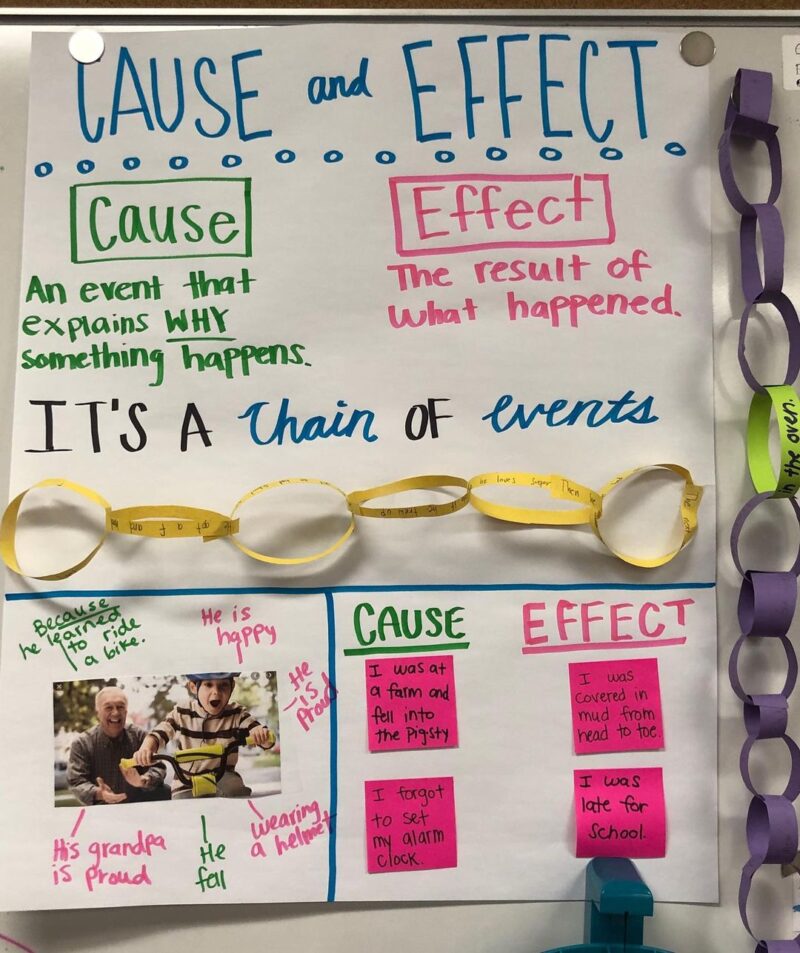
5. Use an interactive anchor chart
Interactive anchor charts are a fun way to get students involved by building the anchor chart together! As you teach the lesson, fill in the anchor chart with your students. They can even write their own sticky notes to add, or write on the chart itself.
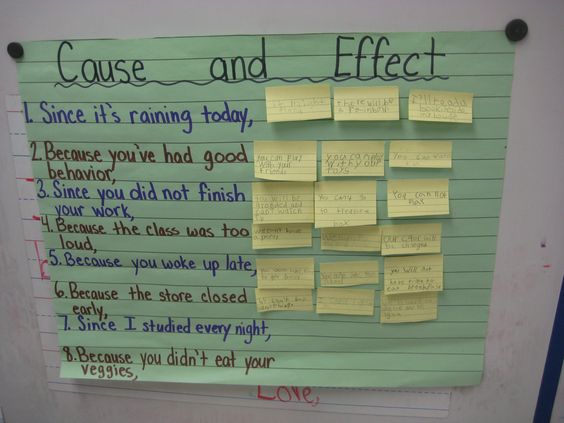
6. Use role plays
Prepare slips of paper ahead of time with ideas for students to act out. Tell the kids that they may make sound effects but may not use words. You can call for volunteers right away or, better yet, put the actors into small groups and give them 5 to 10 minutes to practice before showing the class.
The situations you include could be: You’re playing baseball, and a window breaks. You’re blowing a big chewing gum bubble, and it pops on your face. A football team makes a touchdown and the crowd cheers. You jump on the bed and get scolded. You run fast and earn a trophy. And so on. After every scenario is performed, the class identifies the cause and the effect.
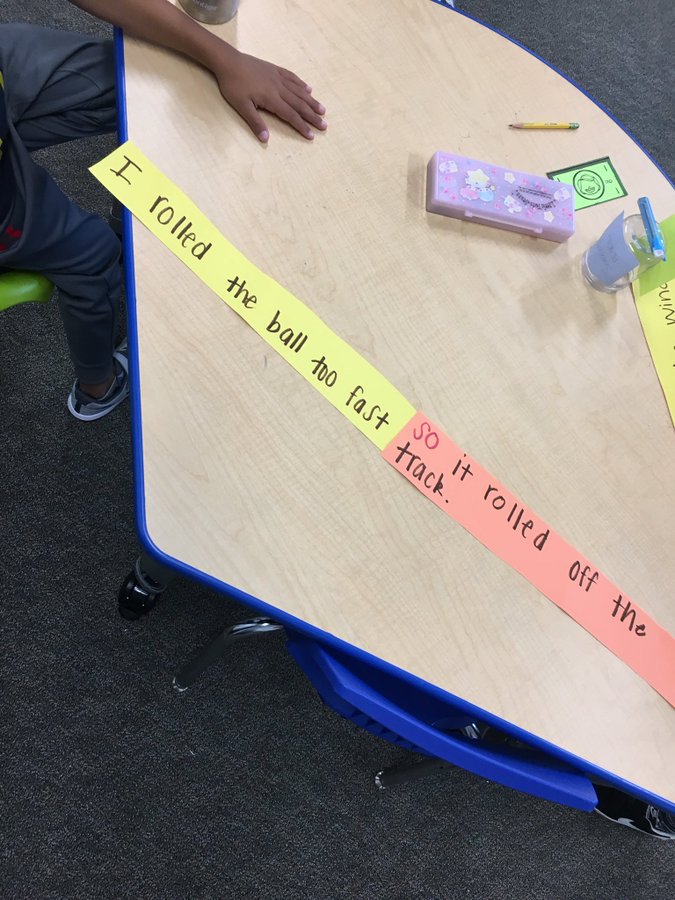
7. Use sentence strips
Write causes on sentence strips and matching effects on other sentence strips. Make sure there are enough for your whole class. Pass out a sentence strip to each child with either a cause or an effect.
When you say “go,” have the kids walk around until they find a match. When they’re done, they can quickly share out their answers. This cause-and-effect lesson is a great way to get kids moving.
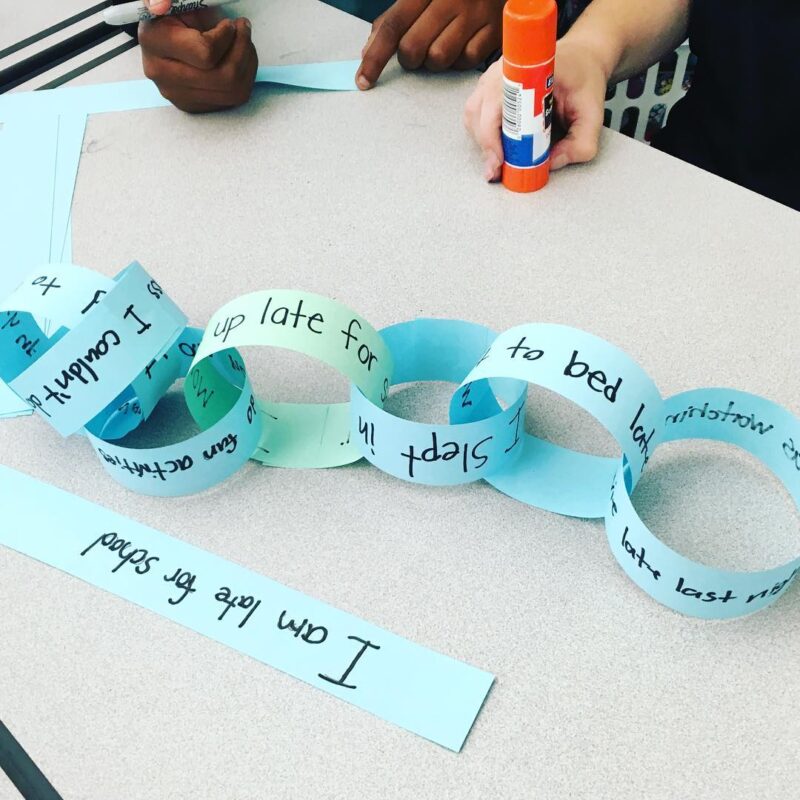
8. Create a cause-and-effect chain
To link multiple causes and effects, create a chain. This is a great way to show the many causes and effects that occur during a novel or longer story. Use different colored papers to code cause-and-effect so students can see whether there is a balance of the two across a story.
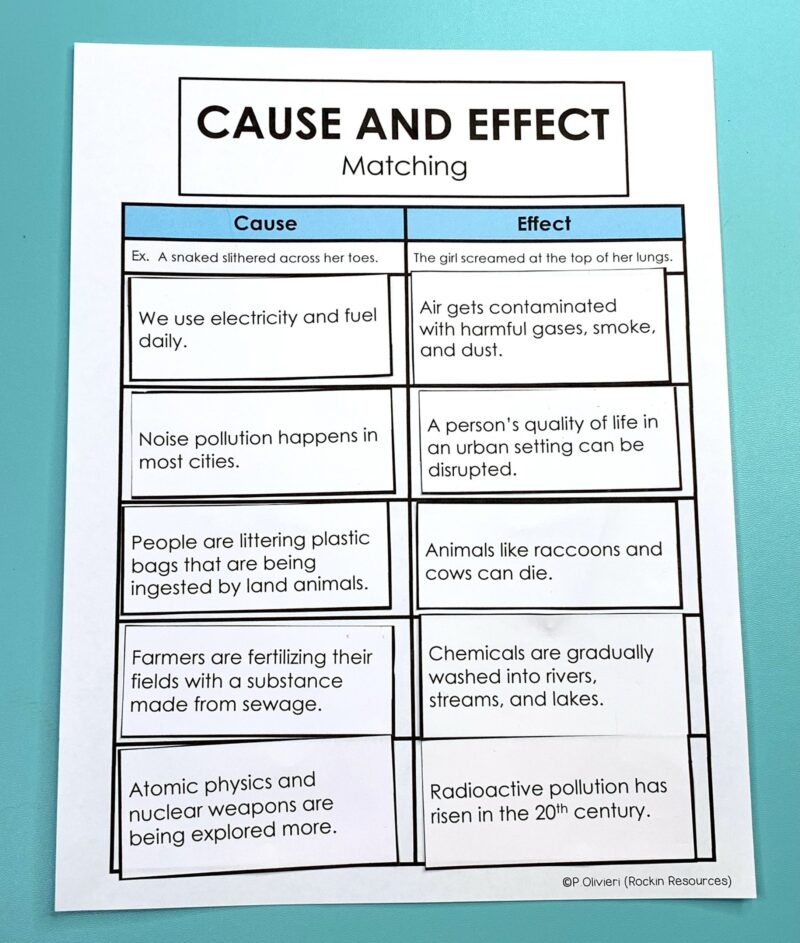
9. Cause-and-Effect match
Cut 3-by-4-inch cards from two different colors of construction paper. Once kids are in pairs, give each child two cards of each color. One color is for the causes (write a “C” on the back of these to help kids remember), and the other color cards are for the effects (write an “E” on the back of these).
Next, the pairs work together to come up with four different cause-and-effect events to record on their cards. For example, on one cause card, it might say: The mother bird sat on her nest. The effect card that matches it might say: The baby birds hatched out of their eggs. Once the pair has finished their cards, they mix them up, place them in an envelope, and write their names on the front.
The next day, set the envelopes around the room, like you’re having a scavenger hunt. Have pairs travel around the room with their partners to open envelopes, match causes and effects, mix the cards back up, put them back in the envelope, and move to the next open set.
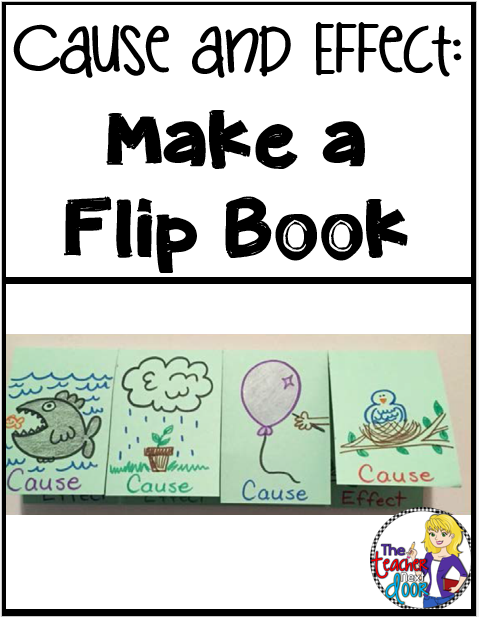
10. Make flip books
These little books can be used in cause-and-effect lesson plans and much more! You might want to prep them for little ones, but older kids can usually make their own. Fold a 9-by-12-inch paper lengthwise (hot dog–style). Keep it folded and use a ruler to mark off the 3-, 6-, and 9-inch spots near the top and bottom.
Draw a line from the top to the bottom at each marked spot. Unfold the page and cut on the three lines from the bottom to the fold. Once the flip-book is created, kids draw four causes on the front and then lift each flap and draw four effects underneath. Need enrichment for higher-level kids? Have them draw or write several effects for each cause.
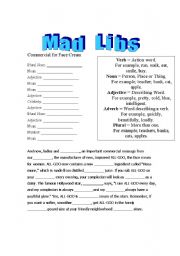
11. Fill out Mad Libs
Use fill-in-the-blank worksheets where the blank spaces are either the cause or effect of an action. Students can make up their own story while determining the cause and effect of their creation.
Check out these downloadable Mad Lib worksheets to get started.
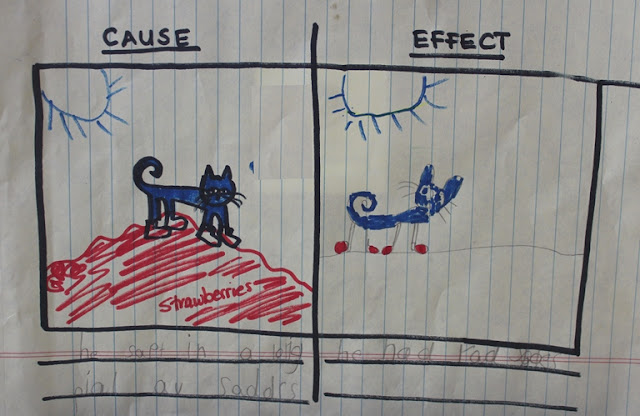
12. Make comics
Take 9 x 12 construction paper (landscape format) and have kids fold it in half and then unfold it. Write “Cause” at the top of the left side and “Effect” at the top of the right side. Kids use crayons, markers, Sharpies, or watercolors to create a picture that shows a cause-and-effect relationship, in this case, with Pete the Cat.
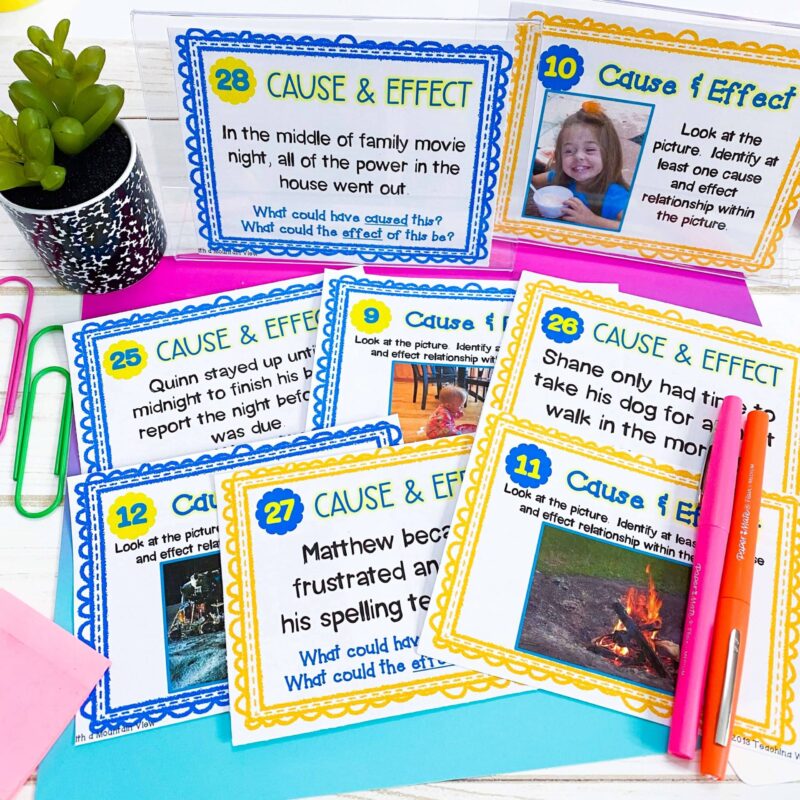
13. Create cause-an-effect cards
Similar to the above cause-and-effect lesson plan, but instead of unfolding the paper, just leave it folded like a greeting card. I actually like to make the cards fairly small, then they can be grouped together in a little cause-and-effect museum for a fun display. The cards just have to be big enough for the kids to draw or write on them.
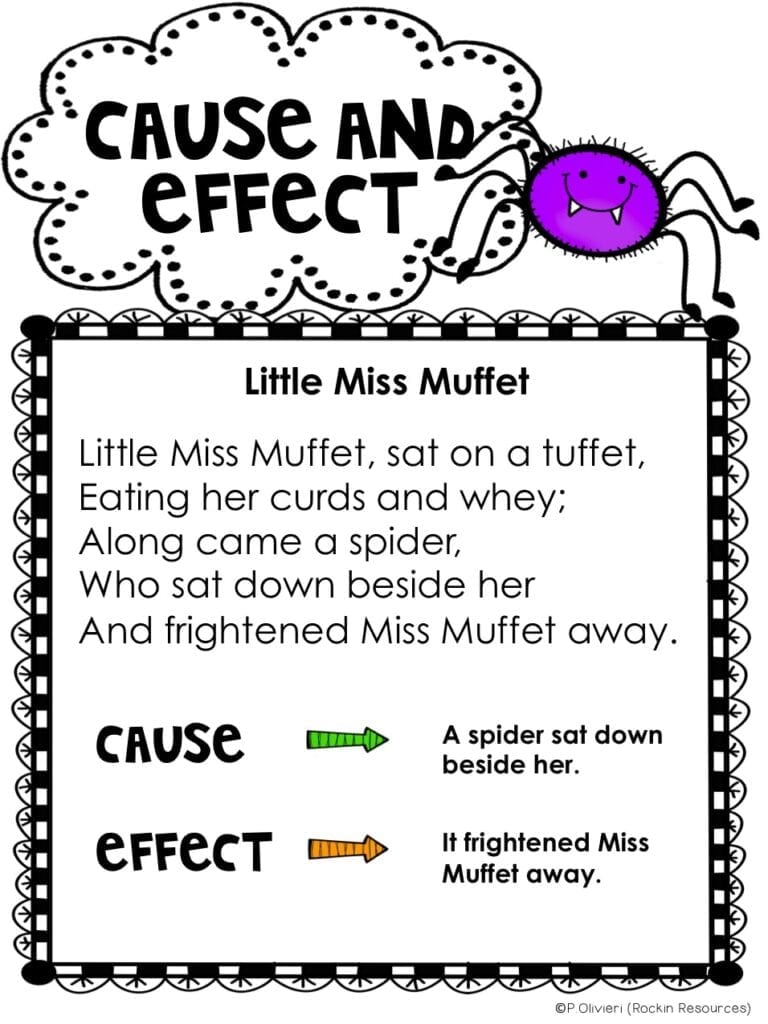
14. Call on Mother Goose
Have students pick out cause-and-effect scenarios from nursery rhymes. Nursery rhymes are short and have clear cause-and-effect to identify.
For more practice with cause-and-effect, have students rewrite the nursery rhyme to include a clearer or additional cause-and-effect using the same characters. For example, what might happen to the spider after Miss Muffet runs away? Or, what might Miss Muffet do next time she wants to eat her curds and whey?
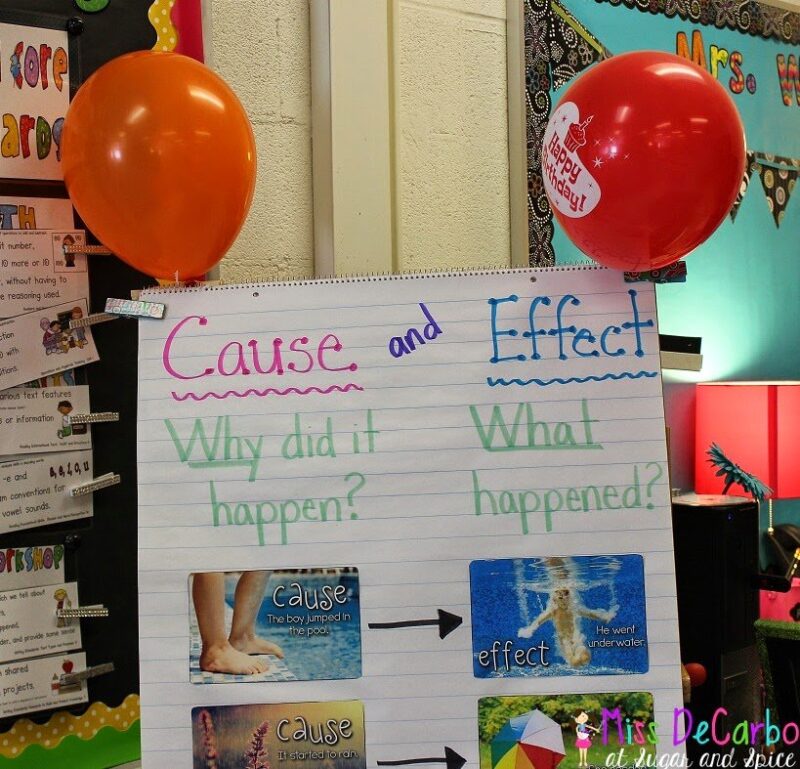
15. Use photos
This cause-and-effect lesson plan could be done after kids have mastered the basics. Gather some interesting pictures from classroom magazines (Scholastic, Weekly Reader, etc.) and regular magazines, or find them online on free-to-use sites like Pixabay. Look for pictures that have a lot going on in them because kids are going to be looking for several causes and effects, not just one. I would suggest NOT letting the kids search for pictures. Not everything is classroom friendly, and even if it were, it could be a distraction.
Glue the picture to the top of a piece of construction paper (portrait format) or a piece of chart paper. Underneath the picture, divide the space in half and write “Cause” at the top of the left side and “Effect” at the top of the right side. Kids brainstorm and write down lots of different causes and effects for the same picture by looking at it in many ways.
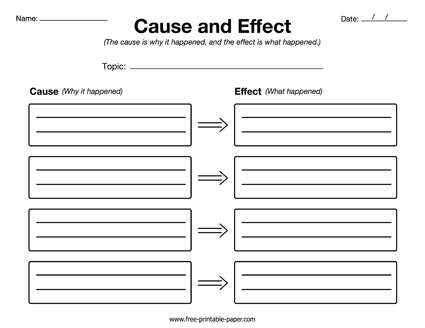
16. Use a graphic organizer
Graphic organizers are a fantastic tool for students to use to organize information, like cause-and-effect. Grab this free cause-and-effect graphic organizer template to get you started. It’s a great way to add extra practice and reinforce the topic.
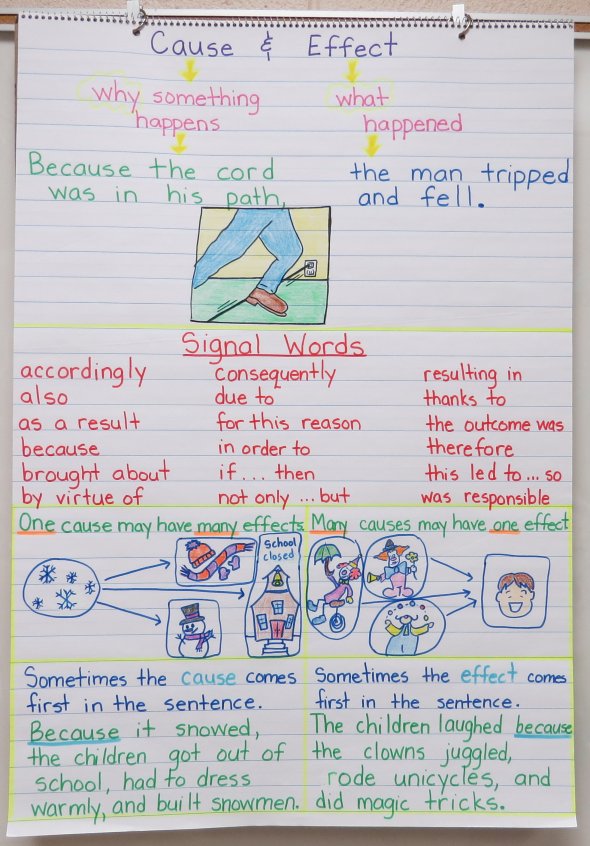
17. Teach students to locate clues
Teach upper elementary students that certain words like because, since, due to, and if … then, or words that help sequence events like first and then, are signals that can help them find the cause or effect as they read.
Use this handout to help them and then have them practice by making up their own cause-and-effect sentences or by doing a version of the sentence-strips activity outlined above.
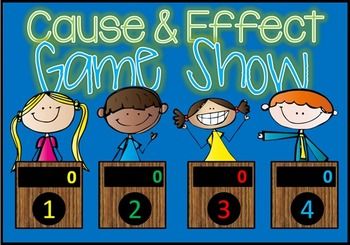
18. Play a game
Games are a great tool to use for cause-and-effect lesson plans. As an added bonus, games can be played independently. When a student finishes early or has some free time, have them test their mastery of cause-and-effect by having them play free online games that will both challenge them and reiterate what you taught. Ice cream lovers in your class?
Group students in teams and have them test their mettle in this game of cause-and-effect Jeopardy!
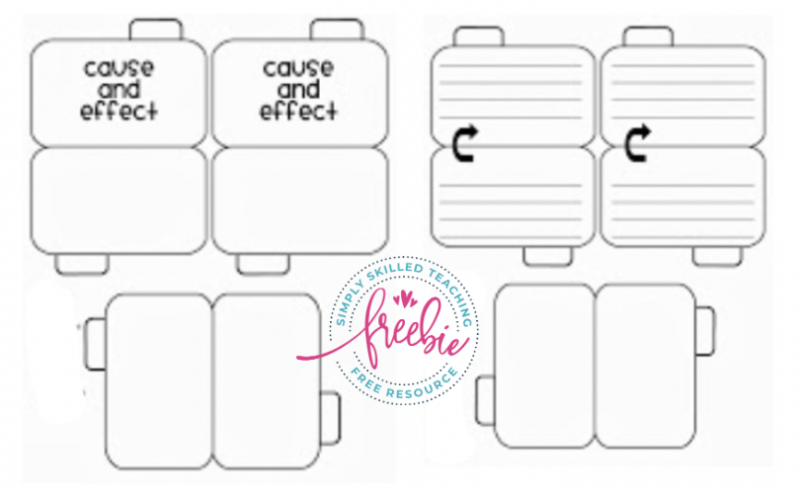
19. Get a digital worksheet
Once students are familiar with cause-and-effect graphic organizers, switch it up a bit! Grab this free digital worksheet template to add a new way of teaching cause-and-effect. It’ll pair perfectly with whatever you have planned for your cause-and-effect lesson.
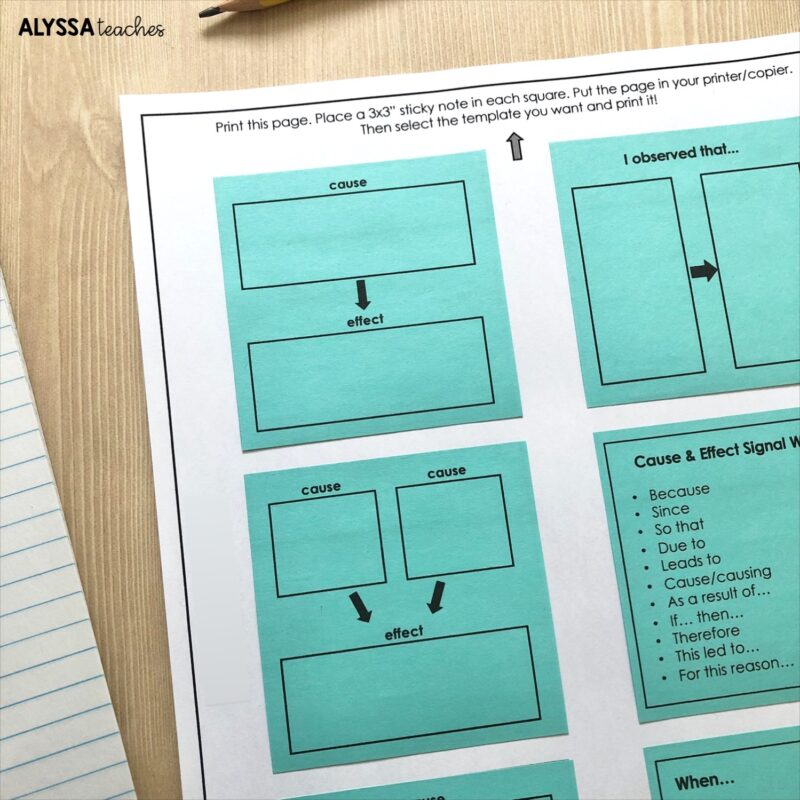
20. Use sticky notes
Printing on sticky notes is so fun! Check our our how-to video here. Your students will love using them to learn. Plus, they can easily be pasted into their notebooks or stay on desks as a reminder.
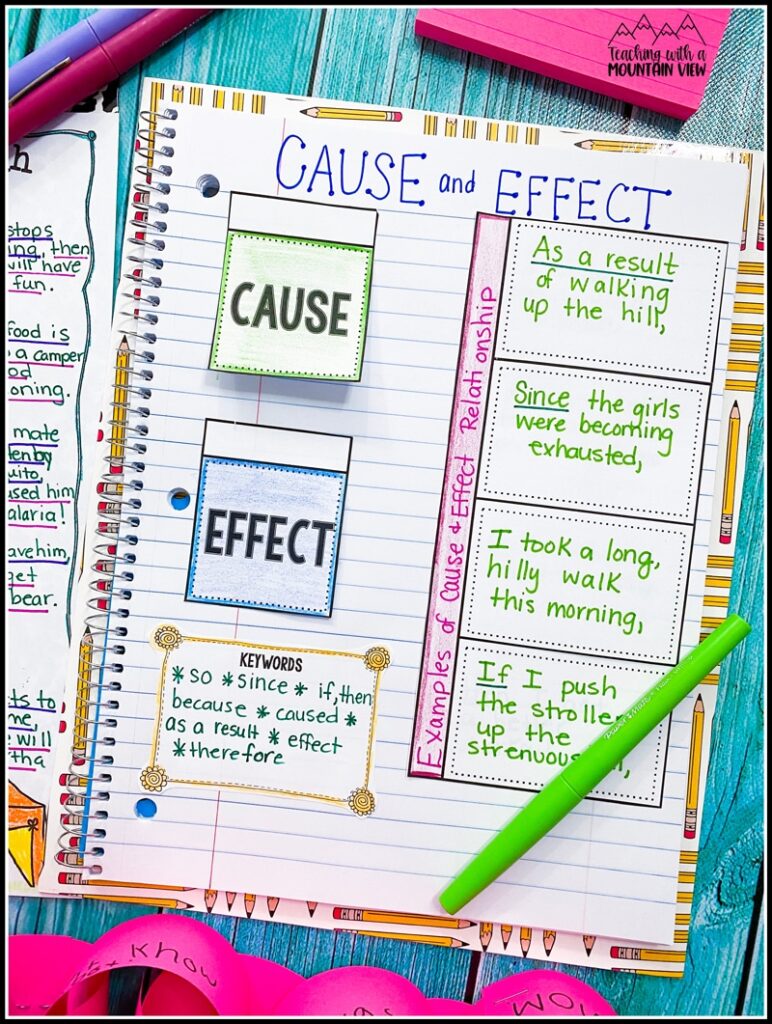
21. Use interactive notebooks
Make your students’ notebooks come to life! Interactive notebooks help students study and retain information with foldable flaps and more. You can get the template of the one pictured here.
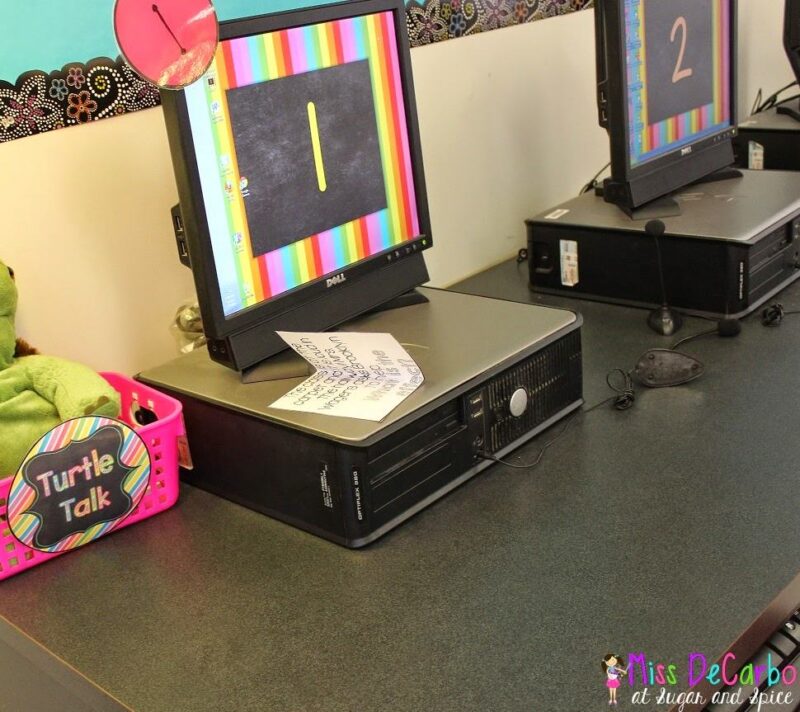
22. Do a scavenger hunt
Scavenger hunts make cause-and-effect lesson plans fun! The idea here is that student have to work together to find the cause of each clue. This will lead them to find the next scavenger hunt clue to keep going.
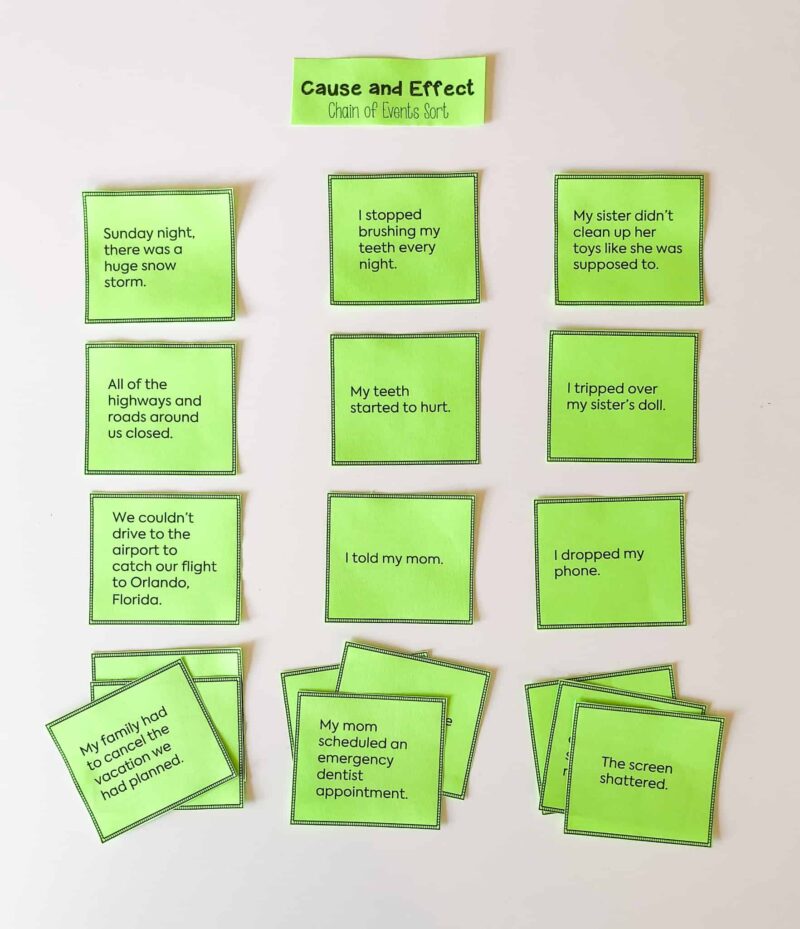
23. Create centers
Choose a handful of cause-and-effect lesson plans from this list and build centers. Students will enjoy learning the concept in a variety of ways. Plus, it ensures that there are multiple ways to learn and grasp this concept.
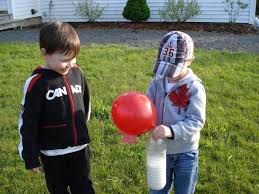
24. Experiment
Perhaps nothing exemplifies fun and exciting cause-and-effect lesson plans better than an experiment. Come up with a list of quick, simple experiments to do, such as putting lots of air in a balloon or putting pennies on the wings of a paper airplane. Then, as a class or in small groups, work together to come up with a simple hypothesis, using the words highlighted above. For example: The plant will grow because we watered it consistently. Or:If we mix the colors yellow and blue, then we will make green. Help students see that the setup of the experiment is the cause and what happens (the result) is the effect.
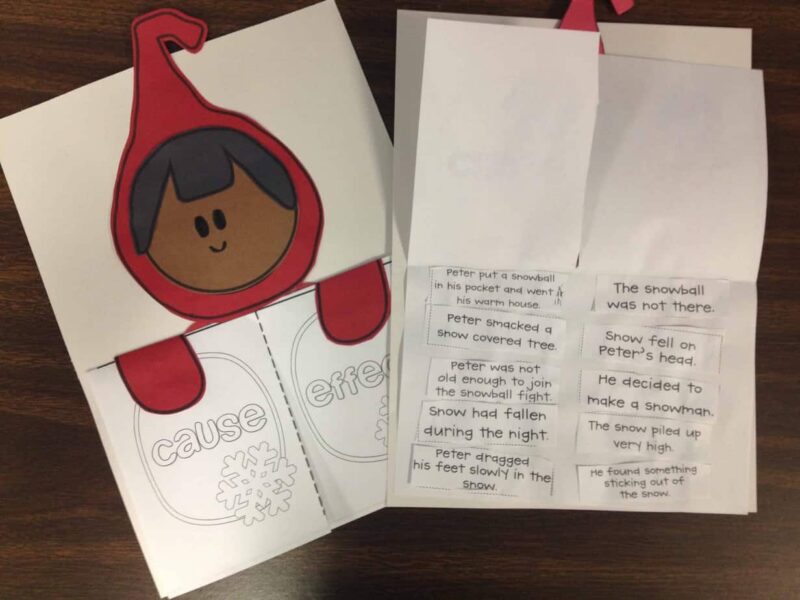
25. Use picture books
Picture books are great tools for cause-and-effect. The images on each page support students’ ability to infer details and connect one event to another.
While you’re reading, pause at each page turn to talk about what effect could happen next. And, have students identify the causes and effect that move a character through the story.
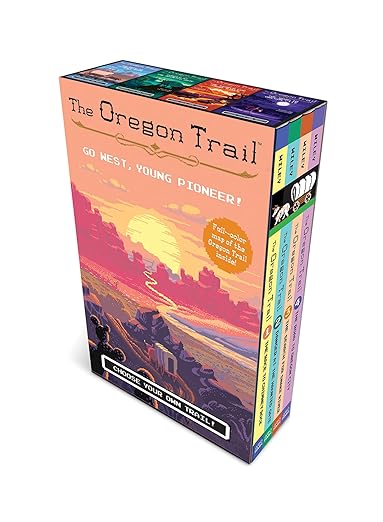
26. Create an adventure
Either read books that have students choose the next step, like this four-set of Oregon Trail books, or write your own. At each point in the story, talk about what could happen based on what has happened, and what might happen next. You decided not to visit the trading post, what might happen as you enter the desert?
- Buy it: The Oregon Trail adventures for less than $20 at Amazon.
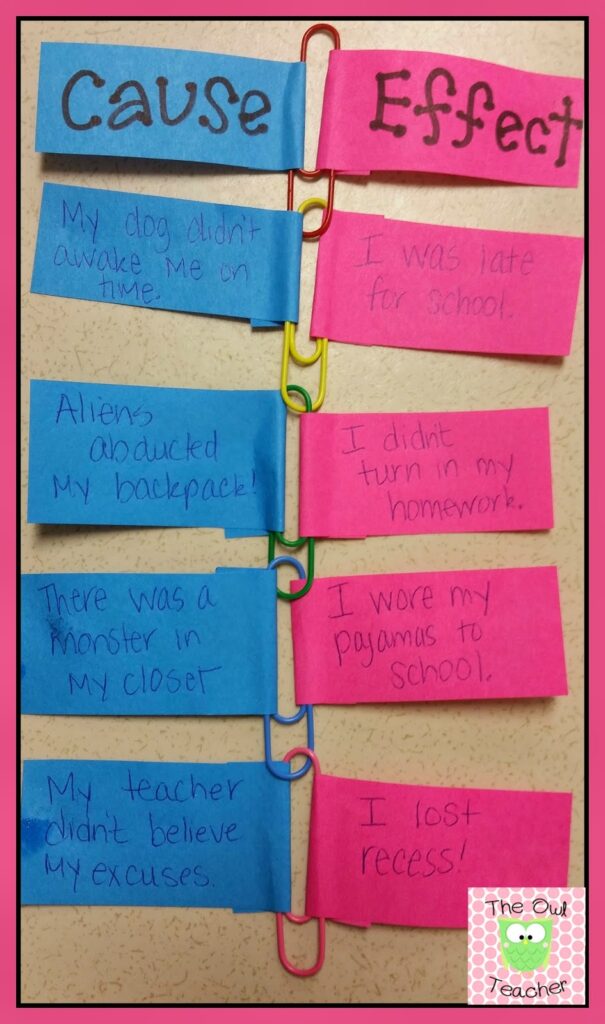
27. Create another type of cause and effect chain
Create another type of cause-and-effect chain to show how events connect and build off of one another. You can use this format to model real life cause-and-effect, or to work out the causes and effects in a story or novel.
- Get it: cause-and-effect chains at The Owl Teacher.
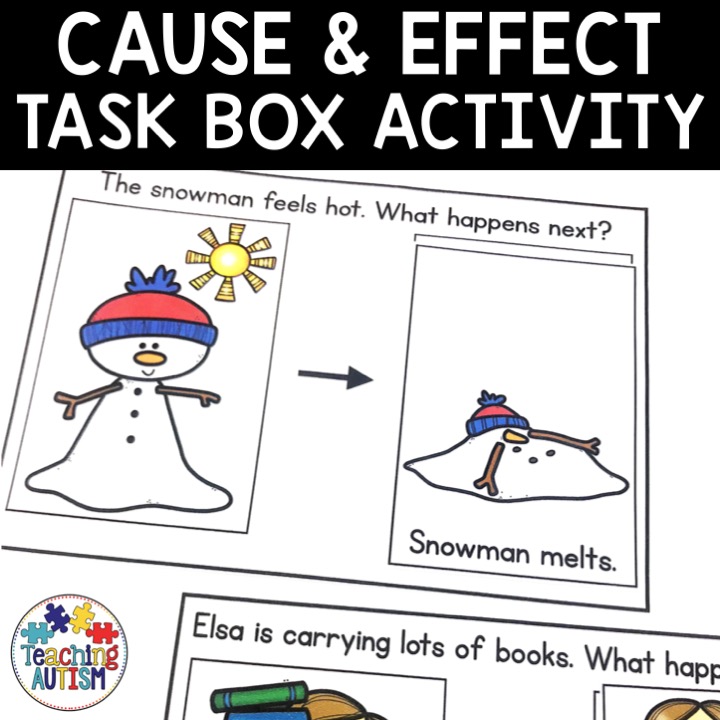
28. Task box
For students who need additional practice, use this task box idea. Include pictures and phrases with clear a cause-and-effect, and have students match each one. A task box should be self-checking so include a way for students to check their work.
- Get it: cause-and-effect task box at Teaching Autism.
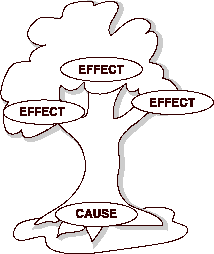
29. Tree diagram
As students advance from linking one cause to its effect, they’ll learn that sometimes causes build to create an overall effect. Use this tree diagram to show how that works in a story or informational text.
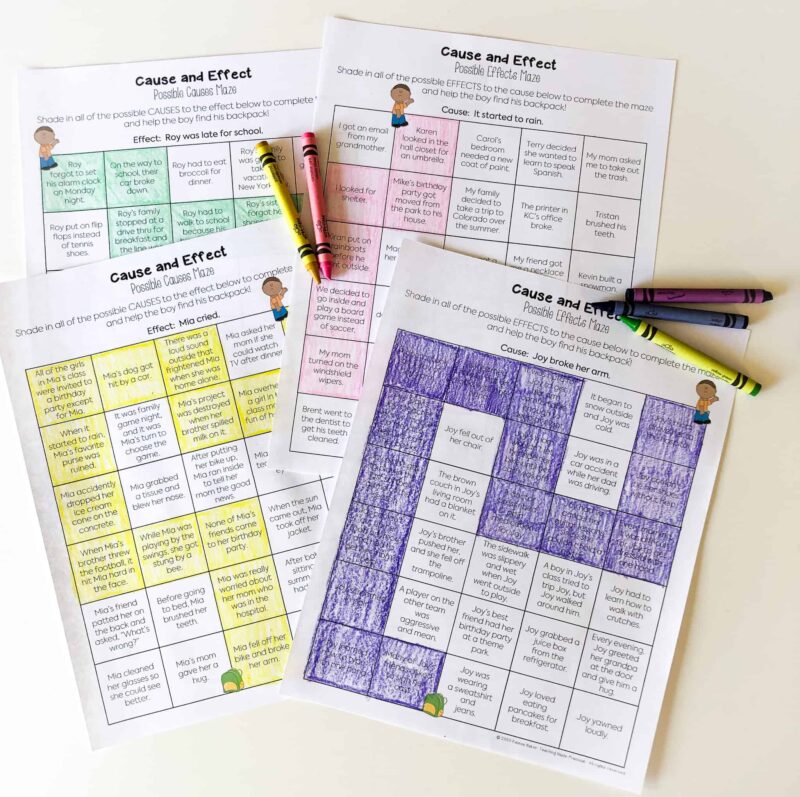
30. Cause-and-effect maze
Help students connect cause-and-effect, and see how an effect can become a cause, use a maze format. Write events in a story on a grid and create a path that students create by coloring in the causes and effects.
- Get it: Cause-and-effect maze at Teaching Made Practical.
Want more articles like this? Subscribe to our weekly newsletters!
Plus, check out our tips for guided reading.
